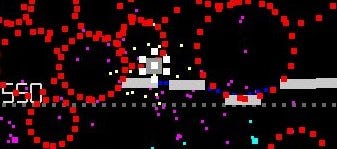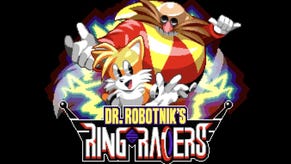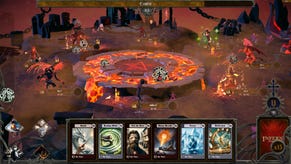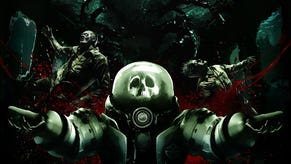Least Best Room (with an Overview)
Guess what this is? Click for a larger view, for extra help.
IT'S A VIDEOGAME!
Say what you like about Kenta "ABA Games" Cho, but you're never in doubt what any of his work is, even at a glance. Which means it's a cause for celebration that he's gone and released another one, Least Best Room.
If you're a watcher of anything indie or SHMUP!, you'll almost certainly be aware of Kenta. In fact, his reputation's risen to the level where he gets a degree of grief from people who consider him not all that. Which is unfair, and - putting aside the merit of much of his work - the secret of his success is plain.
He releases a lot of games.
Like many in the Shmup community, his main "thing" is exploring bits of the 2D action game which weren't properly exhausted during its initial dominance in the eighties or examining the possibilities that have been opened up due to increased processing power. Or both. Agreeably, rather than trying to make each of these ideas into a masterwork, Kenta plays around with them until they're in a solid state, then releases them and moves onto his next idea. He does this at a rate of a couple of year, or thereabouts. None of them are truly immortally perfect, but all are doing something interesting and all are worth playing, at least for as long as it takes to work out what's going on. But as a body of work... well, it's a body of work. It's exciting to play them as you can sense that they were exciting to make. Not the 4 year marathon for Kenta - the games seem forged when the excitement has yet to fade. It's something you used to get a lot of in games, and it's good seeing it, in any form.
Least Best Room is an unusual one, being primarily a Java game rather than Kenta's more usual downloadable executable. It's considerably less shooty - at least on first impressions - than most of his stuff. Also it's odd in that it's taking me a long time to work out its gaming genetic sequence. Normally you can boil down his game science to a neat formula - like, say, Robotron meets Sumo with a splash of Centipede (Mu-cade). But this time, it's elusive. Rainbow Islands versus the antagonists of an inversed Mr Driller (or an uninversed Pang) with the movement system of that tarzan-based flash-game whose name I forget right now and a whole load of modern physics and ungoogleable classic N's stickmanisms.
In short, it's easier to play than explain. I suggest you do so.









